Gibson Greenybucker and Custombucker review – the affordable way to give your guitar a Custom Shop upgrade?
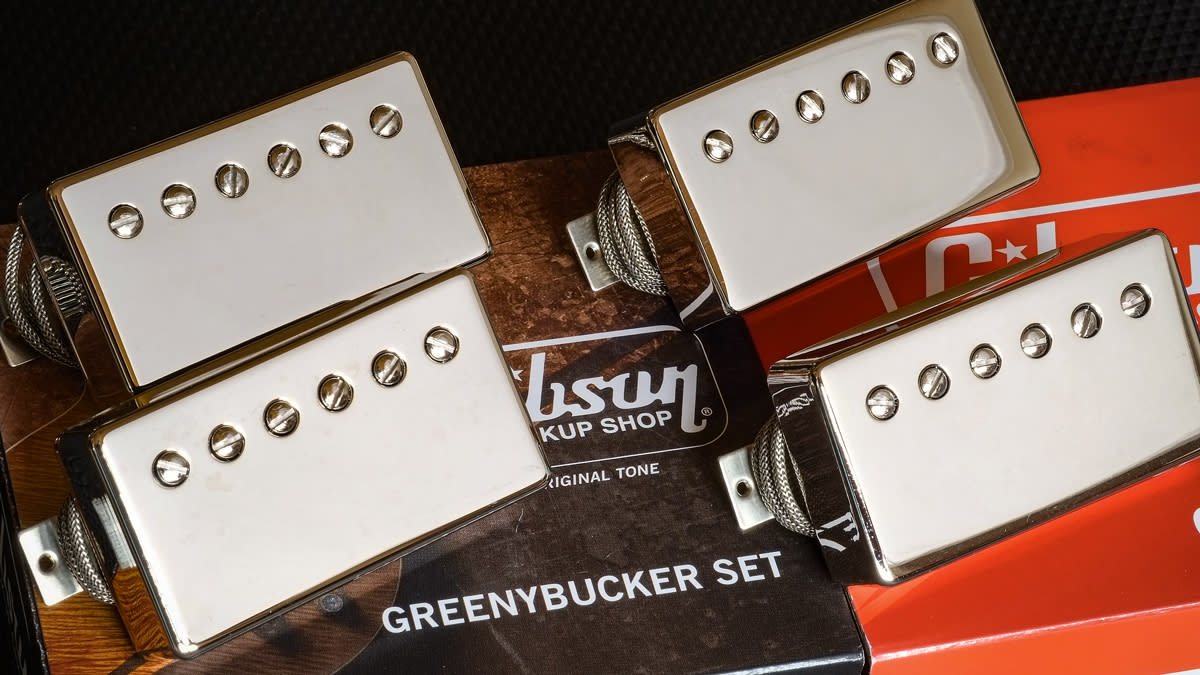
What started back in the early ’70s with pretty much just Mr DiMarzio and Mr Duncan is now a huge industry: the aftermarket electric guitar pickup.
Earlier this year, for the first time in its history, Fender launched a range of Cunife/Cobalt Chrome pickups that don’t feature on any of its guitar models. At their launch, Fender told us that it sees the aftermarket pickup business as “robust”. Checking in with Gibson USA’s Jason Davidson, who looks after the newly formed Pickup Shop, I asked if that was their impression, too. “Yes, it is,” was his simple reply.
In the new marketing for the Pickup Shop, Gibson actually states: “Since 1935, the Gibson Pickup Shop has been the source for the world’s finest pickups,” presumably referring to the bar pickup on Gibson’s Electric Hawaiian lap-steel guitar that debuted in 1935 and became the EH-150 in 1936.
“It actually goes back further than that if you think about Lloyd Loar in the 1920s experimenting with electronics,” says Jason. “But we also have catalogues here from the ’50s and ’60s that show the electronics were available separately – they weren’t the packed parts with leaflets like they are today, but they were sold as spare parts.
“I was just looking at a 1957 catalogue that shows the P-90 – you could buy one without the cover, you could buy just the cover. In the 1959 catalogue, again, it shows you could buy the parts. But it wasn’t until the 70s that we went into retail packaging.
“Since around 1990 through to 2022, we really didn’t change our aftermarket offering that much,” continues Jason. “We used the same sort of acrylic box and the same models for about 30 years! We treated pickups, really, as just another part, but we didn’t really focus on the pickups as a factory.
“With the new management team coming onboard, Cesar Gueikian [now president and CEO of Gibson Brands] asked myself and Jared Brandon – the Pickup Shop’s product manager and designer – to develop the Pickup Shop, to shine some light on the little factory within the big factory that we have here making pickups. This was to redevelop the packing, redevelop the marketing and really push pickups like we never have before.”
The first wave of pickups launched last year and the second wave in August of 2023. “Introducing the Custombuckers as aftermarket sets was huge. We’ve put those into [Gibson Custom] guitars since 2013, but we had never offered them aftermarket, so the Custombuckers quickly became our number-two-selling pickup after our ’57 Classics.
“We have around 50 people working in the Pickup Shop and they produce well over 1,000 pickups per day because we’re making pickups for Gibson USA, Gibson Custom – and now Epiphone are using a lot of Gibson pickups and Kramer, too.”
The Pickup Shop’s offerings fall into three strands, the main one being the Original Collection that houses that ’57 Classic and Classic Plus, P-90s, Burstbuckers, T-Types, mini-humbuckers, ’70s Tributes and the Dirty Fingers.
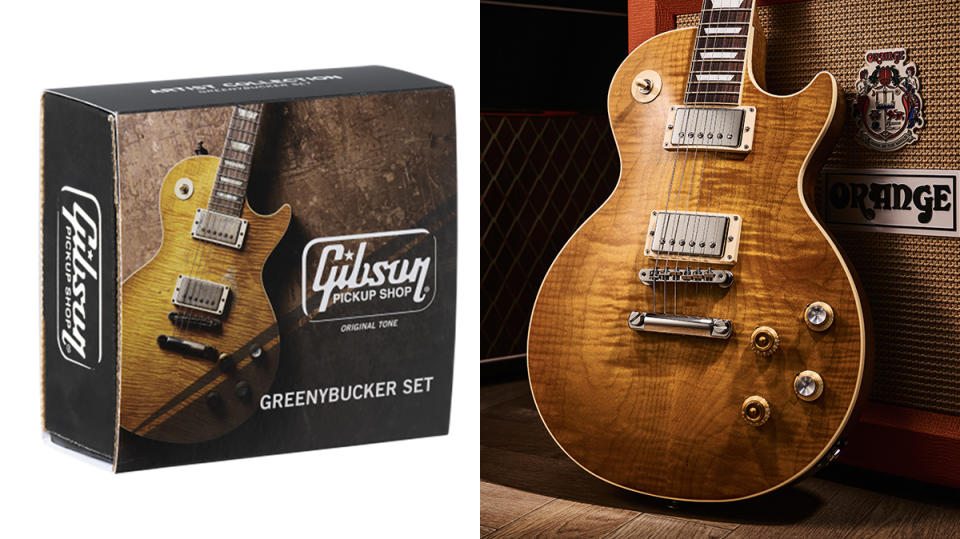
The Historic Collection includes those Custombuckers and a new-for-2023 underwound version, while the Artist Collection – again new for this year – offers the much-discussed Greenybucker set. There are plenty more new releases for this year, too, not least the underwound soapbar and dog-ear P-90s and ’57 Classics, and the hum-cancelling P-90 DC that featured on this year’s Billie Joe Armstrong Les Paul Junior and the Kramer ‘Eruption’.
While the sole Greenybucker set in the Artist Collection isn’t actually marketed as a signature pickup, we suspect we’ll be seeing more additions to this Collection in the not-too-distant future.
“We are absolutely aiming for that,” says Jason. “The direction Gibson started to go with Tony Iommi [the first Gibson signature pickup from 1997], then Angus Young, it sort of fell out. Like I said, there really wasn’t a lot of attention paid to the pickups back then; the guitars got all the glory. But, yes, we are focused on lining up new artist pickups in the future. It’s a definite ‘watch this space’…”
On Test
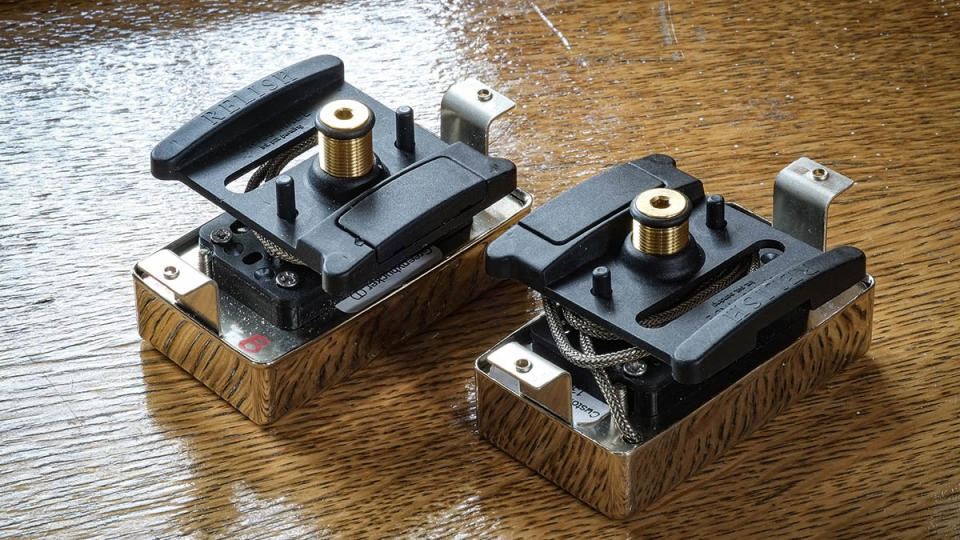
A couple of days after our chat with Jason, a box turned up from the Nashville Pickup Shop with a set of those new Greenybuckers and a pair of the underwound Custombuckers.
That will do for starters, won’t it? All good, except fitting and listening to pickups takes a lot of time, certainly if you want to do it properly. I needed some help. While many pickup makers use various guitar-shaped contraptions so they can quickly swap out their pickups, that’s not something I have.
However, I do have a loaner – a Cream T Aurora Custom with the Relish pickup-swapping technology, something I’ve been toying with for some time as a vehicle to carry out pickup tests on.
The issue for us domestic modders is that any new pickup (humbucking-sized only) has to be mounted on the Relish backplate, which involves some tricky soldering, plus you need to cut off the pickup legs and shorten the hook-up wire considerably. Now, while Cream T will mount any suitable pickup to a Relish frame for you, I didn’t have the luxury of time.
So, after a bit of trial and error, and as the Gibson pickups have long legs, I found they fit into the Relish frames. Then winding the pickup wire around the central thread of the Relish backplate – which allows height adjustment – I only had to cut off about an inch of the hook-up wire.
As to the soldering bit, well, Relish suggests using a temperature-controlled soldering station to a temperature of 310 degrees Celsius and a very fine soldering iron tip. My old-school irons weren’t ideal, but after some hours, and a few swear words, I’d managed to mount the new Gibson pickups. I could now swap them in and out of the Aurora in seconds without even unplugging the guitar. If you really want to test pickups comparatively, this is the way to go.
Sounds
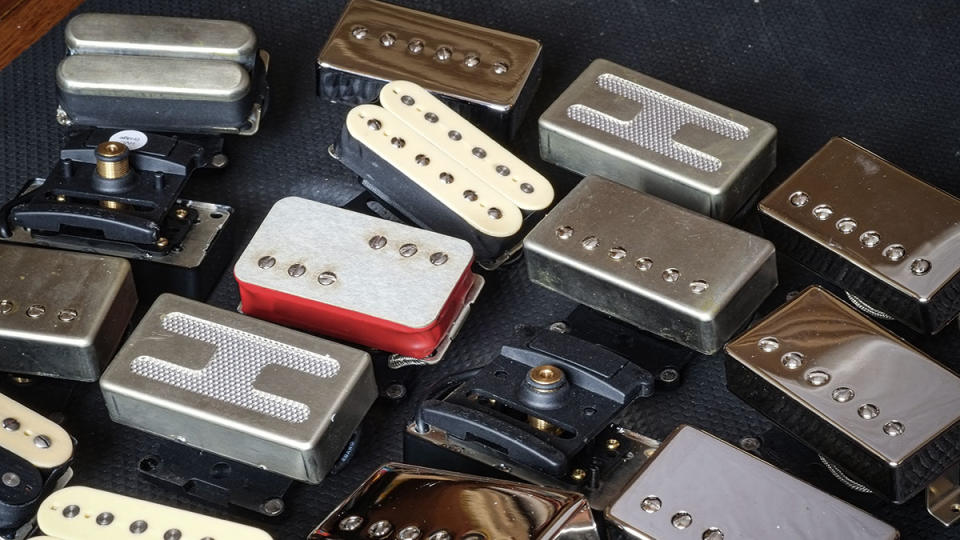
Having already listened to the Greenybuckers on Gibson’s production Greeny Les Paul earlier this year, I was a little surprised that they were actually quite pokey and strong-sounding. That’s certainly the impression with the aftermarket set, too, although these, like the Custom Shop versions, are not potted (unlike those on that production guitar) and that brings quite a different level.
Yes, the guitar becomes microphonic – if you accidentally hit the active pickup cover with your pick, you’ll hear a big clonk through your amp, yet the sound takes on a subtly different character that’s not easy to describe.
From memory, they sound livelier than the potted versions on that Greeny Les Paul and here they feel very touch-sensitive, too – things that many would maybe agree are more original PAF-like.
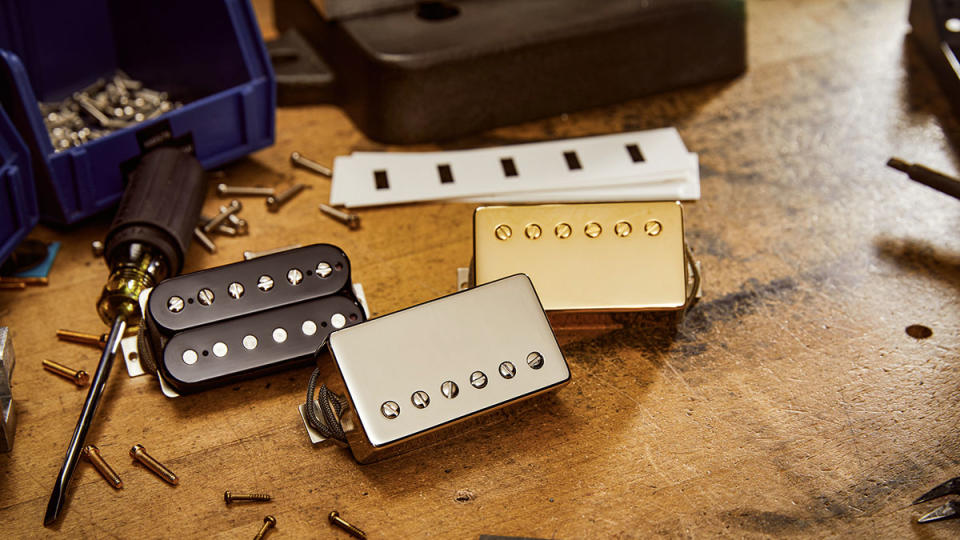
With the reversed magnet of the neck pickup, of course, we’re out of phase in the middle both-on position. And whether it’s the lack of potting playing a part, the fully out-of-phase voice simply seems more usable than I remember of that production guitar, even though it’s still nasally. Turn either volume back a smidge, of course, and we get more fullness, still with a hint of that out-of-phase character.
As someone who uses the out-of-phase tone a fair bit on my own Les Paul Classic, although I’m not after replicating Peter Green (I wish!), the out-of-phase option is simply another sound or texture.
These Greenybuckers are a very vocal pickup set with a lot to explore. A missed opportunity, perhaps, is that if the neck pickup came with two conductors (and ground) you could choose between in-phase and out-of-phase via a simple pull-switch tone control, for example.
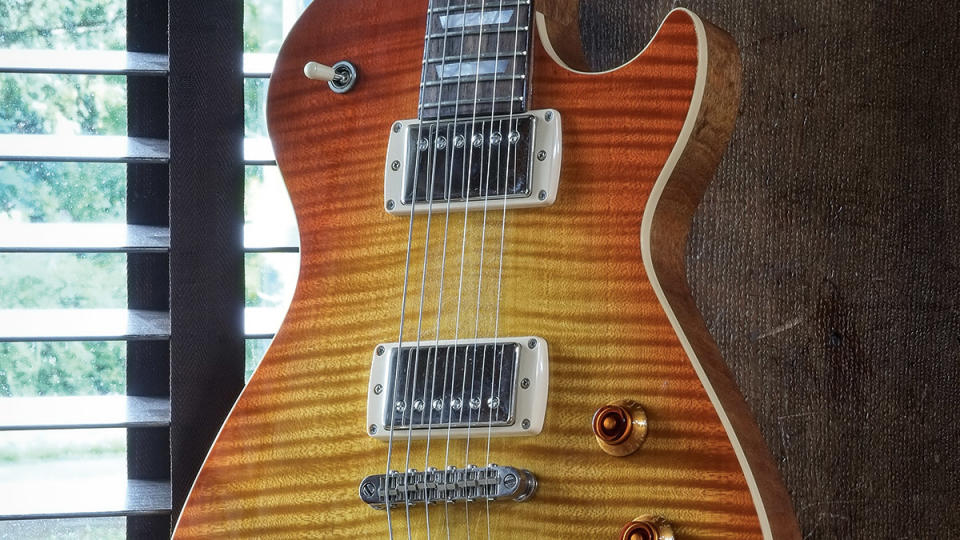
To be honest, it’s a little while since I’ve heard a Custombucker and they’ve always been attached to pretty pricey Gibson Custom Les Pauls. As we’ve discussed, these are the new, slightly underwound versions. Compared with the Greenybuckers they sound less full and somewhat cleaner but with a glorious bell-like high-end that seems enhanced by the halo-like effect of the unpotted coils and covers.
They’re obviously in the Burstbucker 2 territory, and just A/B’ing between that Les Paul Classic (with a BB2 at the bridge and BB1 at the neck, both unpotted retrofits), these underwound Custombuckers – and, indeed, the guitar in total – sound just that little bit sweeter.
Just because I can, I swapped out the neck Custombucker and dropped in the Greenybucker, which might seem ‘wrong’ on paper, but it’s in the running as a new personal favourite combo.
Presumably because we now have noticeably different outputs, with both on and volumes full up, it almost doesn’t sound out of phase, and it’s only when you pull the neck volume back that the thin, raspy sound emerges. So with both volumes up, that mix position is very cool, adding a little ‘something’ and a strong third sound behind the oh-so-bluesy neck and Johnny Marr jangle of the bridge.
Final thoughts
In typical ‘stick it to The Man’ style, many scoff at the pickups of industry giants such as Fender or Gibson. After all, specialist makers make much better-sounding pickups in their lock-ups and sheds, don’t they?
Well, if’s that’s your findings after years of swapping and listening to pickups, then fine. But Gibson has been doing this for a while now and both the sets we were loaned are effectively those used on Custom Shop models where the Custombucker is pretty much the standard humbucker and the Greenybuckers are pretty much the same ones (albeit unaged cosmetically or with True Historic covers) used on the $/£19k Greeny Les Paul. Worth a punt? Yes, indeed.
Specs
Gibson Greenybucker set
PRICE: $299/£319
SKILL LEVEL: Easy if you can solder – fitting vintage-style ’buckers like this is as easy as it gets
CONTACT: Gibson
Gibson Custombucker Underwound
PRICE: $269/£289 w/ nickel cover (as reviewed); $229 / £239 uncovered (black or zebra); $289/£309 w/ gold cover

